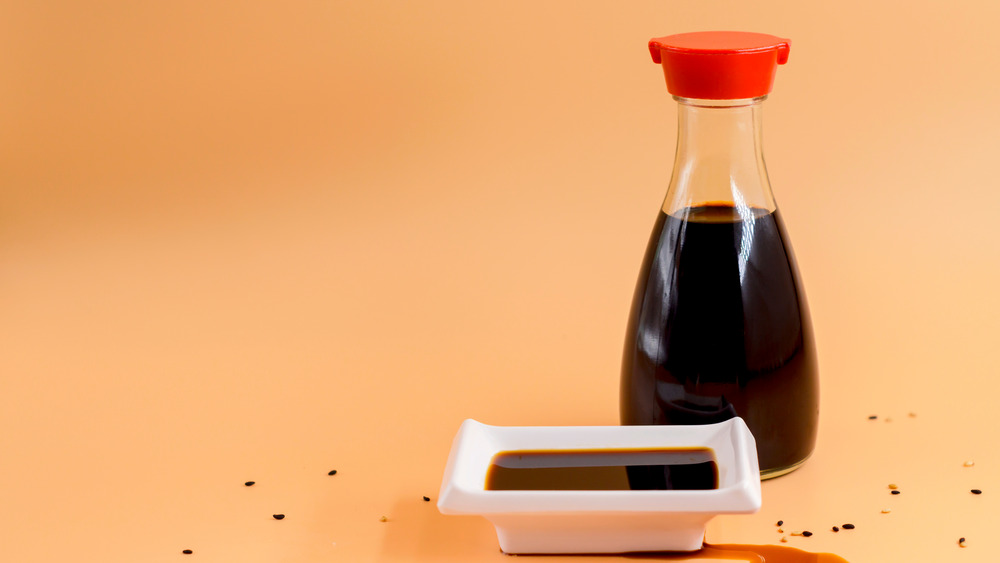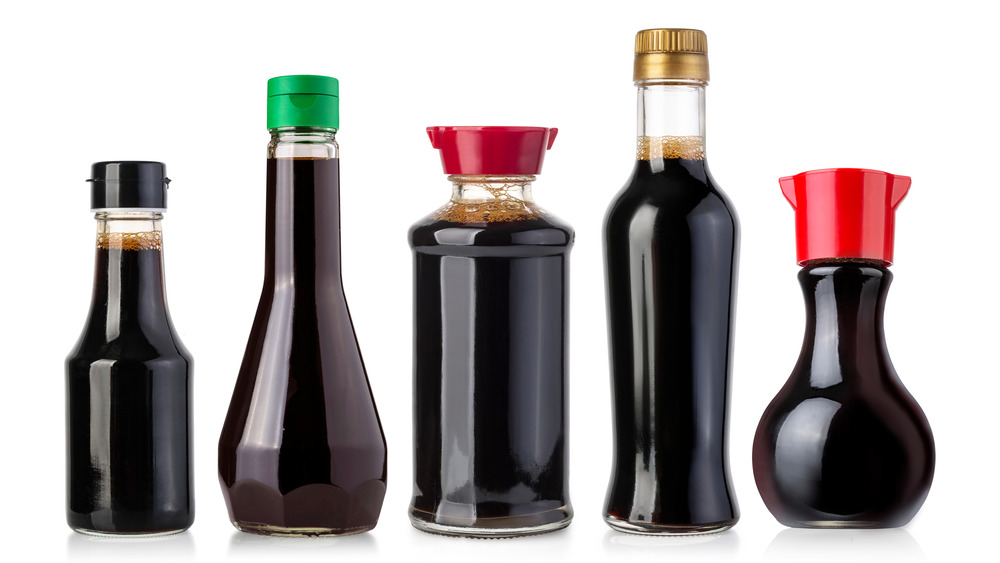How Traditional Soy Sauce Is Really Made
Whether it's included with Chinese takeout or filling the dipping bowl at a sushi restaurant, most people are relatively familiar with soy sauce. This dark brown liquid is not just flavorful but well balanced, Umami Information Center notes, touching on all five tastes: sweet, salty, sour, bitter, and umami. But what actually goes into making this magical condiment?
The traditional method of making — or brewing — soy sauce is fairly straightforward, though time consuming. Soybeans are steamed or soaked in water, then mixed with crushed wheat, according to Eater, as the sugars in the wheat are important for the fermentation process. Then, mold is added, usually Aspergillus mold, notes Serious Eats, and left to sit for three days.
Next, the mixture is combined with water, salt and bacteria, usually lactobacillus, according to Serious Eats. The bacteria starts to break down the sugar in the mixture, and the fermentation begins. The fermentation is considered to be a two-step process. The first step, called koji in Japanese, is solid-state fermentation, which is the first part of the process when the wheat, soy and mold are left to sit (via Food Research International). The second, moromi, is brine fermentation, which is what happens after the water and salt are added.
Soy sauce is traditionally left to ferment for two to three years, then the liquid is separated from the solids. That liquid ferments for one more week on its own, per Eater, and then finally bottled.
All soy sauces aren't created equal
People may not realize that there is a significant difference between Japanese and Chinese soy sauce. What most people think of as soy sauce in the classic Kikkoman bottle is the Japanese style, called shoyu, notes Serious Eats. Chinese soy sauce, or jiangyou, according to Culture Trip, is made mostly the same way. However, Chinese soy sauce doesn't contain any wheat, only soy, so it has more of a bite and lacks the sweetness that Japanese soy sauce gains from wheat. It also tends to be thicker than Japanese soy sauces, according to Serious Eats.
There are also different styles of soy sauce. According to Quartz, soy sauce is the third most popular condiment in the United States, and comes in light and dark versions, with low sodium options available as well. While the differences aren't huge, dark soy sauce tends to be thicker, darker, and less salty, while light soy sauce has a lighter flavor and color, is thinner in texture, and a little heavier on the salt (via Food Network).

